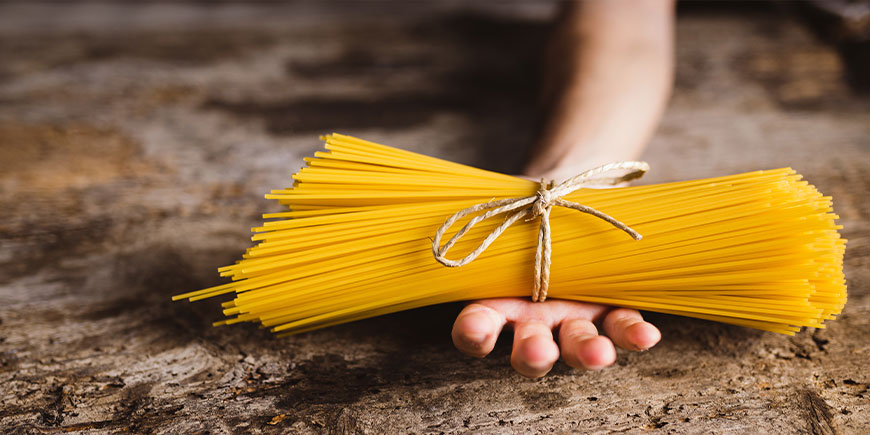The mystery of why spaghetti never breaks in 2 pieces revealed by a slow-motion video. With a little help from Science.
The Physics of Pasta: Take a piece of dry spaghetti; don’t worry, you can cook it later, no waste. Grab it from both ends, and keep bending it until it breaks.
How many pieces are you still left with? The answer is certainly not two.
Why does this happen?
The question we ask
It’s a problem that has puzzled physicists, including Richard Feynman, one of the most brilliant and eclectic minds of the last century, who tried to come up with a theoretical explanation for why it’s impossible to break a strand of spaghetti into just two pieces.
The end result of his research was that he spent an entire evening bending spaghetti and scattering it all over the kitchen without finding a solution.
The secret revealed
The answer to this puzzle came in 2005 when Basile Audoly and Sébastien Neukirch, researchers at Pierre and Marie Curie University, published a study in the journal Physical Review Letters.
In the paper, the authors developed a theoretical model to describe the forces involved in bending a strand of spaghetti or any long, thin rod.
If a long, thin object is bent equally from both ends, it will break near the centre, where the curvature is greatest. This fracture causes waves to propagate, further bending the spaghetti and triggering a cascade effect of elementary fractures. This physical phenomenon is called “cascade fracture”, meaning that one break causes others.
The mathematics behind this discovery is not simple. It involves the Kirchhoff’s equations for elastic rods: when released, the physicists explain, the spaghetti goes through three successive regimes. The released end quickly straightens (first regime), causing bending waves (second regime) that travel along the spaghetti to the end held in the hand. Here (third regime), they are reflected and amplified, resulting in multiple breaks. The theoretical model has been confirmed by experimental results.
For other fields of research, such as physics, mathematics and engineering, the problem has some implications. The research was awarded the Ig Nobel Prize in 2006.
The slow motion video
As reported by Gizmodo, the mystery has also been naively solved by Smarter Every Day. The video, shot in slow motion, shows the inevitable and almost simultaneous breakage of the poor spaghetti after being bent.
It took a whopping 250,000 frames per second to capture the exact moment of the crack, but it was worth it.


